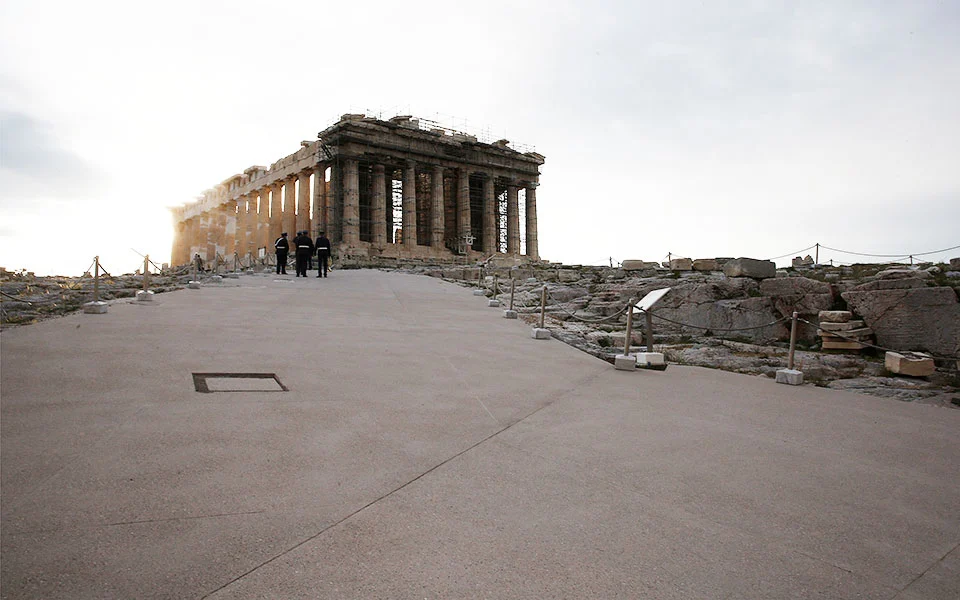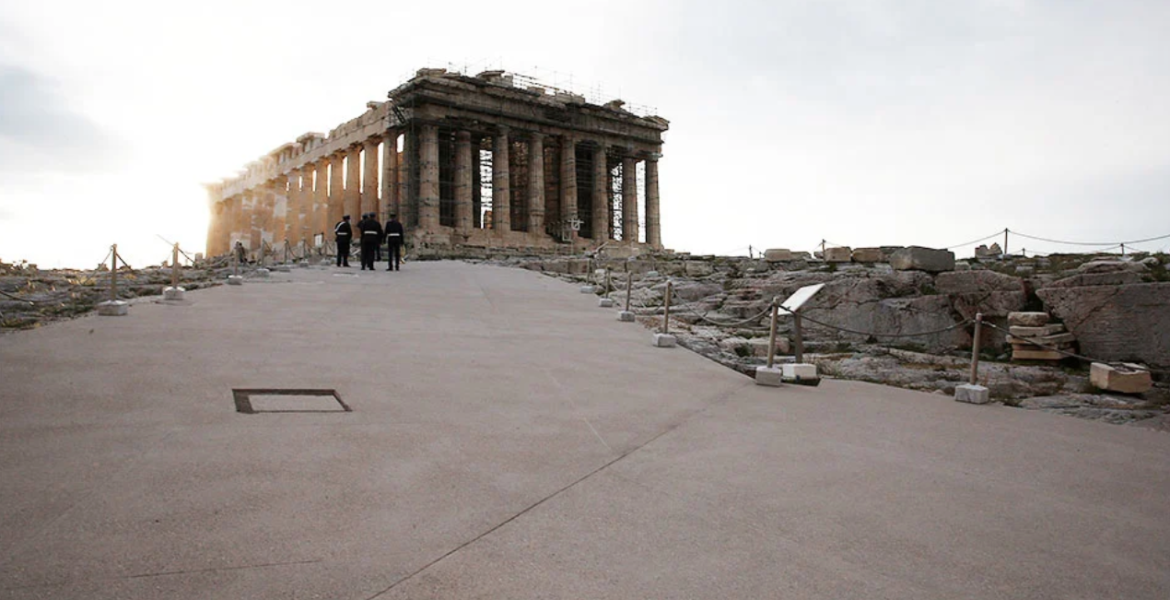
Last year, a concrete path was created for wheelchair users, elderly citizens and others with mobility problems to see the Acropolis in Athens up close.
However, the decision stirred reactions on social media.
Recently, Kathimerini sought the opinion of two architects- Yannis Aesopos, president of the University of Patra’s Architecture Department, and Dimitra Katsota, associate professor of architectural design at UPatra.
"I would say that the general impression is positive. The new floor creates a path, a walk, that the visitor can follow and observe the monuments. It somewhat marks a movement," Aesopos said.
"It remains a technical work and does not acquire artistic and architectural value and this becomes apparent in its details," he added.
The project was funded by the Onassis Foundation, which also donated the improved Acropolis illuminations.
On her part, Katsota said the colour difference between beige and grey, which is the colour of the route that connects the elevator with the main route, was not necessary.
"This means that the new layer should retain the geometric characteristics of the artificial with the complexity of the pre-existing landscape of the Acropolis and therefore at no time should the new floor melt in the landscape and attempt to become a landscape."
Both architects also noted that the cement path can be reversed and stressed that possible route extensions should not be undertaken.
"There should be no abuse of the routes because there is a risk that they will dominate as an impression in the landscape of the Acropolis. I would say that they should be kept where there is more mass movement of tourists and the other points should be left a little freer as routes for everyone to look for on their own without a special floor," Aesopos concluded.
- The term “Acropolis” comes from the Greek words “akron” (which means the “highest point or extremity” and “polis” (which means “city”). Acropolis can be taken to mean “High City”, “City on the Extremity”, or “City on the Air”.
- The Parthenon is often called “the world’s most perfect building.” Architectural tricks like a slight angling of the temple pedestal correct the optical impression that the building sags in the middle, and barrel-like curves on the columns counteract the illusion that they narrow in the middle. So in a way, one might say the Parthenon’s perfection is only achieved through a series of deliberate imperfections.
- The Greek flag flying on the Acropolis has special historic significance. In 1941, two young men pulled down the swastika flag flying there during the Nazi occupation, leaving it empty. Incredibly, they’d reached the Acropolis using ancient passages they’d learned about in Greek history books. It was a powerful act of defiance that set the tone for the fierce Greek Resistance movement. Today, you can see the Greek Presidential Guard, the Evzones, perform a flag-raising and flag-lowering at dawn and dusk on Sundays.
- The Acropolis is one of the earliest known settlements in Greece. Built sometime around the fourth millennium, the Acropolis was an ancient city that still retains much of its original Classical architecture and temples, including the Parthenon. The Parthenon was built between 447 and 432 BC as a sacred temple for the goddess Athena, and it’s a true marvel to behold. The entire complex of statues, temples, pillars, and structures is stunning.


